MICROSCOPE-ANTIQUES.COM © 2013-21.
LARGE BINOCULAR COMPOUND MICROSCOPE
c. 1886
SIGNED: C. X. DALTON, 1886
(HIDDEN)
SERIAL NUMBER: NONE
MODEL: BOSTON OPTICAL WORKS 'A STAND'
THE TOLLES IMPROVED MECHANICAL STAGE No 2 & HISTORY OF THE TOLLES MECHANICAL STAGES
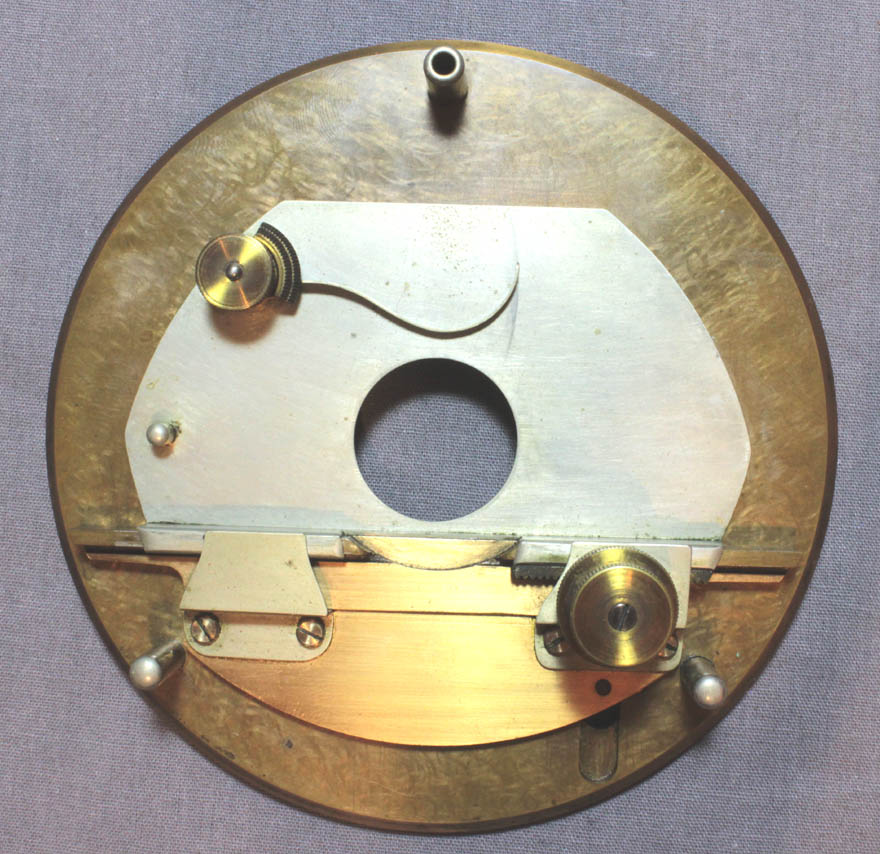
The mechanical stage on this Dalton/Boston Optical Works microscope is the Tolles Improved Mechanical Stage No 2 1882
first announced in the JRMS in 1881, two years before Tolles died, and the year before Bulloch's similar stage was reported in the same publication. It features upward pointing controls that are concentric so that they do not interfere with full rotation of the stage. This makes it easier to switch between X and Y motions, without having to move between two different knobs. The slide registers against a stop on the left side and a single sideways stage clip holds it against the back of the stage. This stage differs from Bulloch's in that Bullochs had 360 degree calibrations and also calibrations for slide position, neither of which is found on the Tolles stage. An interesting feature is the provision of two locking levers(red arrows), which hold the stage securely on its ring while allowing easy and fast removal of the stage at will. Tolles often supplied more than one type of stage, so this feature made it easy to switch stages.
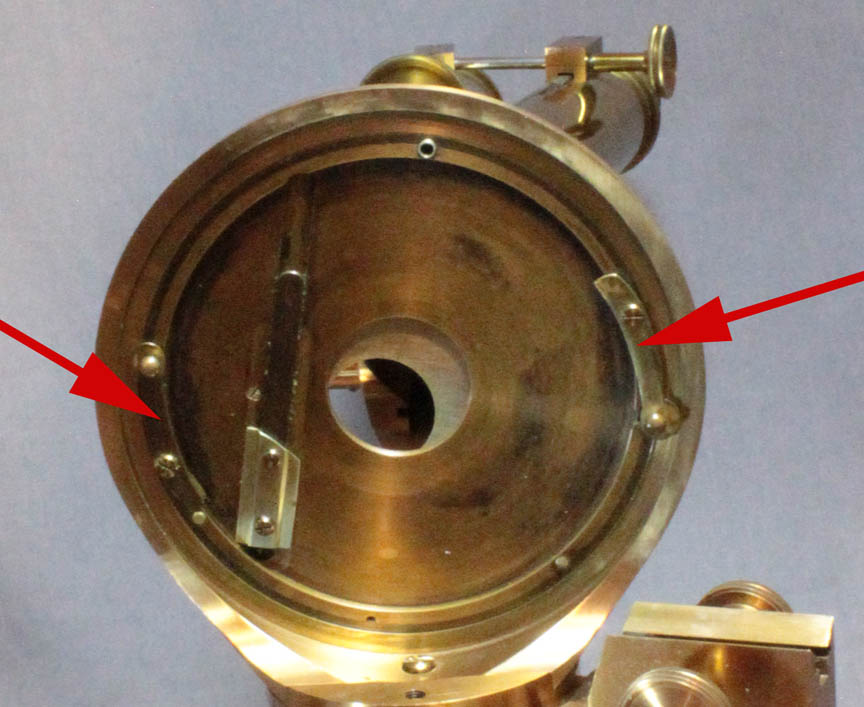
An interesting feature is the provision of two locking levers(red arrows), which hold the stage securely on its ring while allowing easy and fast removal of the stage at will yet still allow it to rotate. When the levers are pulled out, they overlap the ring that supports the stage, preventing the stage from coming off or being removed; pushing them in allows the stage to be removed. Tolles often supplied more than one type of stage, so this feature made it easy to switch stages.
HISTORY OF THE TOLLES MECHANICAL STAGES:
Over the years, Tolles developed several different types of stages.
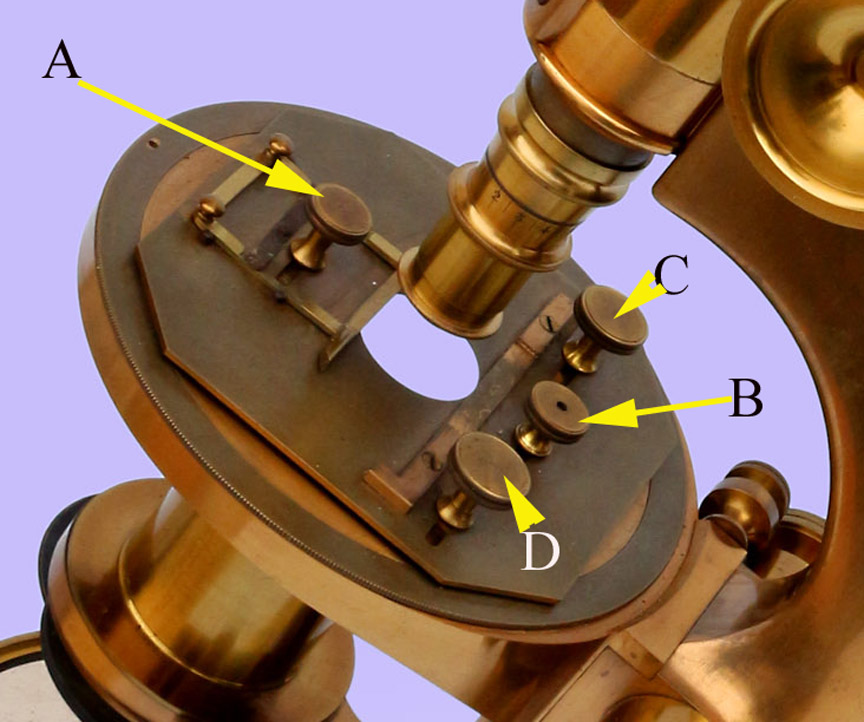
The B stand commonly featured the Tolles roller stage with movements achieved via friction rollers(rather than rack and pinions). Controls labeled A and B move the stage in the right-left direction and the controls labeled C and D move it in the forward(up) direction and backward(down) direction.
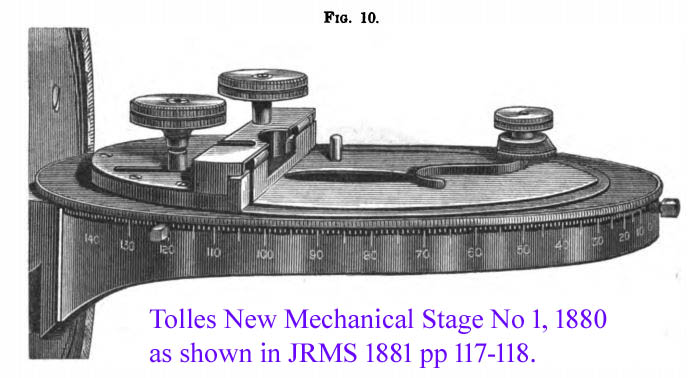
In the JRMS of 1881, pp 115-118, Dalton's improved mechanical stage with two separate controls for right-left and front-back movements. At the same time a glide-stage was also described with an integrated hemispherical lens. The mechanical stage(left) was controlled by knobs acting on rack and pinion. The knobs project vertically, thus not interfering with rotation of this stage. In the BOW of 1883 catalog, this stage was referred to as the New Mechanical Stage No 1 1880
.
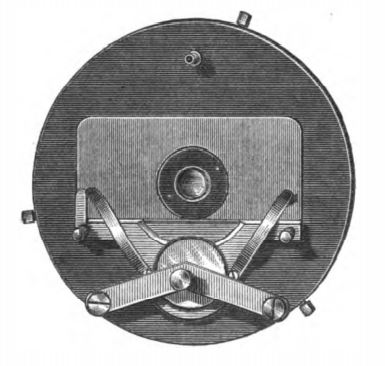
In the same article as the New Mechanical Stage No 1 was described in 1881, a glide stage was shown on page 116. This stage, the image of which is reproduced here to the left, featured a plate for a slide holder into which a planoconvex lens was integrated, and meant to be oiled to the slide. It was interchangeable with the mechanical stage. The gliding stage holder was held against the rest of the stage by an adjustable pressure point.
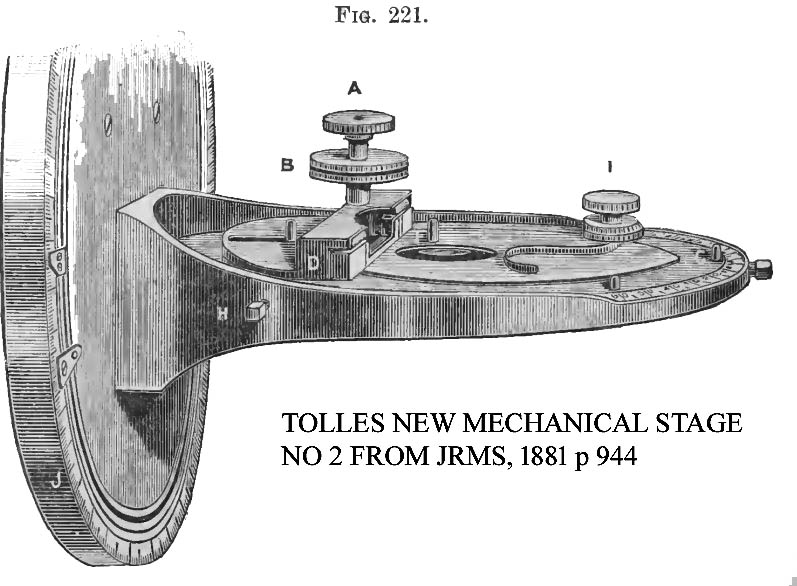
Later that year (1881), the JRMS reported the next version of Tolles' mechanical stage which was similar to the previous version with the important exception of concentric controls. This was reported on pages 944-946. This is the stage provided with the Dalton BOW microscope of 1886. In the 1883 catalog it is referred to as the No 2, 1882
. Tolles was clearly not the first to use concentric upward-facing controls in this manner, which was provided with microscopes provided by other makers from about the same time, including Watson in England and Bulloch in the U.S.A. Bulloch stated that this form of stage originated many years earlier with Charles Spencer.





